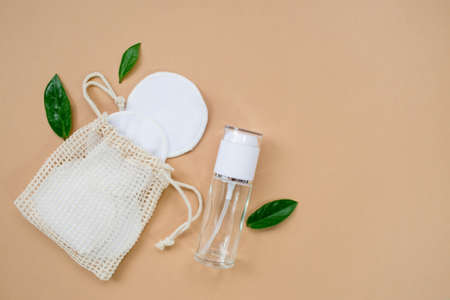1. Understanding Organic and Natural Anti-Aging Creams
When shopping for skincare products, especially anti-aging creams, you might notice labels like “organic” and “natural.” While these terms are often used interchangeably, they have distinct meanings and implications for how the product is formulated. Understanding these differences can help you make a more informed choice when selecting an anti-aging cream that suits your skin’s needs.
What Is the Difference Between Organic and Natural Skincare Products?
Both organic and natural skincare products emphasize the use of plant-based ingredients, but there are key differences in how they are sourced and processed. Here’s a quick comparison:
| Category | Definition | Common Ingredients |
|---|---|---|
| Organic | Made with ingredients grown without synthetic pesticides, fertilizers, or genetically modified organisms (GMOs). Often certified by organizations like USDA Organic. | Organic aloe vera, essential oils, plant extracts |
| Natural | Contains ingredients derived from nature but may not necessarily be organic or free from synthetic chemicals. | Botanical extracts, minerals, honey |
How Are Organic and Natural Anti-Aging Creams Formulated?
The formulation of organic and natural anti-aging creams focuses on using ingredients that nourish the skin while avoiding harsh chemicals. These products typically contain:
- Antioxidants: Help combat free radicals that contribute to aging. Common sources include green tea extract and vitamin C.
- Hydrating Agents: Natural moisturizers like hyaluronic acid and shea butter help maintain skin elasticity.
- Plant-Based Oils: Ingredients like jojoba oil, argan oil, and rosehip oil provide essential fatty acids to support skin health.
- Botanical Extracts: Herbs such as chamomile and calendula offer soothing properties for sensitive skin.
Are They Better Than Conventional Anti-Aging Creams?
The effectiveness of organic and natural anti-aging creams depends on your skin type and concerns. Some people prefer them because they avoid synthetic preservatives, fragrances, and harsh chemicals found in conventional skincare products. However, conventional anti-aging creams may contain scientifically formulated ingredients like retinol or peptides, which have been extensively studied for their anti-aging benefits.
Ultimately, choosing between organic, natural, or conventional anti-aging creams comes down to personal preference and what works best for your skin. In the following sections, we’ll explore whether these organic and natural formulations truly deliver better results compared to conventional alternatives.
2. Key Ingredients in Organic and Natural Anti-Aging Creams
When it comes to organic and natural anti-aging creams, the power lies in their ingredients. These products often rely on botanical extracts, essential oils, and antioxidants to help combat signs of aging without the use of harsh chemicals. Let’s take a closer look at some of the most common and effective natural ingredients found in these creams.
Botanical Extracts for Skin Renewal
Botanical extracts are derived from plants and are packed with vitamins, minerals, and antioxidants that promote skin health. Many plant-based extracts have been used for centuries in skincare due to their nourishing and rejuvenating properties.
| Botanical Extract | Benefits for Skin |
|---|---|
| Aloe Vera | Hydrates, soothes irritation, and promotes healing |
| Green Tea Extract | Packed with antioxidants that fight free radicals and reduce inflammation |
| Rosehip Extract | Rich in vitamins A and C, helps with collagen production and skin regeneration |
Essential Oils for Hydration and Elasticity
Essential oils not only provide a natural fragrance but also offer therapeutic benefits for aging skin. They help lock in moisture, improve elasticity, and provide nourishment without clogging pores.
| Essential Oil | Main Benefits |
|---|---|
| Argan Oil | Packed with fatty acids and vitamin E to hydrate and repair skin |
| Jojoba Oil | Mimics the skin’s natural oils, balancing moisture levels |
| Frankincense Oil | Tightens skin and reduces the appearance of fine lines |
Antioxidants for Fighting Free Radicals
Antioxidants play a crucial role in protecting the skin from environmental damage caused by UV rays and pollution. They help neutralize free radicals, which contribute to premature aging.
| Antioxidant Ingredient | How It Helps the Skin |
|---|---|
| Vitamin C | Brightens complexion, boosts collagen production, and reduces dark spots |
| Vitamin E | Moisturizes deeply while protecting against oxidative stress |
| Coenzyme Q10 (CoQ10) | Supports cell regeneration and helps maintain skin firmness |
Why These Ingredients Matter
The combination of botanical extracts, essential oils, and antioxidants makes organic anti-aging creams a powerful choice for those looking to maintain youthful skin naturally. By using nature-derived ingredients rich in vitamins and nutrients, these creams can nourish the skin while helping to minimize fine lines, wrinkles, and dullness.
![]()
3. Effectiveness Compared to Conventional Anti-Aging Creams
When choosing an anti-aging cream, many people wonder whether organic and natural products are more effective than conventional ones. To understand the differences, lets compare how these products work and what ingredients they contain.
How Do Organic and Natural Anti-Aging Creams Work?
Organic and natural anti-aging creams rely on plant-based ingredients, vitamins, and minerals to nourish the skin. They often contain antioxidants, essential oils, and botanical extracts that help reduce fine lines, boost hydration, and support collagen production.
How Do Conventional Anti-Aging Creams Work?
Conventional anti-aging creams typically use scientifically formulated compounds such as retinol, peptides, and hyaluronic acid. These ingredients are designed to penetrate deeper into the skin and deliver faster, more noticeable results.
Comparing Key Ingredients
| Aspect | Organic & Natural Creams | Conventional Creams |
|---|---|---|
| Main Ingredients | Plant extracts, essential oils, natural antioxidants | Synthetic peptides, retinol, lab-formulated hyaluronic acid |
| Effect on Skin | Nourishes gently, reduces irritation risks | Targets wrinkles aggressively, may cause sensitivity |
| Absorption | May take longer to show results | Often delivers quicker visible effects |
| Long-Term Benefits | Supports overall skin health naturally | Provides fast anti-aging benefits but may require continuous use |
| Sensitivity Risk | Lower risk of allergic reactions or irritation | Higher chance of irritation due to synthetic compounds |
Which One Is More Effective?
The effectiveness of an anti-aging cream depends on your skin type and concerns. If you prefer a gentle approach with fewer chemicals, organic and natural creams might be a better choice. However, if you want faster results with scientifically backed ingredients, conventional creams could be more suitable.
Things to Consider When Choosing an Anti-Aging Cream:
- Your skins sensitivity level – if you have sensitive skin, natural options may be gentler.
- The speed of results – conventional creams often provide faster visible changes.
- Your preference for ingredient sources – if avoiding synthetic chemicals is important to you, organic products are a better fit.
- The long-term benefits – natural creams may support overall skin health better over time.
Ultimately, both types of products have their advantages. It’s important to choose one that aligns with your skincare goals and personal preferences.
4. Potential Benefits and Drawbacks
When considering organic and natural anti-aging creams, its important to weigh both the benefits and potential drawbacks. While these products offer a more natural approach to skincare, they also come with certain limitations.
Benefits of Organic Anti-Aging Creams
Organic and natural anti-aging creams are often preferred by individuals looking for gentle yet effective skincare solutions. Here are some key advantages:
Fewer Harsh Chemicals
Many conventional anti-aging creams contain synthetic ingredients, preservatives, and artificial fragrances that can cause irritation or allergic reactions. Organic alternatives tend to use plant-based ingredients that are gentler on the skin.
Eco-Friendly and Sustainable
Organic skincare brands typically focus on sustainability, using biodegradable packaging and responsibly sourced ingredients. This makes them a great choice for environmentally conscious consumers.
Nourishing Natural Ingredients
Many organic creams contain beneficial ingredients such as aloe vera, green tea extract, and essential oils that provide hydration, antioxidants, and vitamins to support healthy skin.
Drawbacks of Organic Anti-Aging Creams
Despite their benefits, organic anti-aging creams also have some potential downsides that should be considered:
Shorter Shelf Life
Since organic creams avoid synthetic preservatives, they often have a shorter shelf life compared to conventional products. This means they may expire faster and require proper storage to maintain effectiveness.
Potentially Reduced Potency
Certain synthetic ingredients used in traditional anti-aging products, such as retinol or peptides, have been scientifically proven to reduce wrinkles and improve skin elasticity. Some organic formulations may not deliver the same level of results.
Higher Cost
The production of organic skincare products often involves ethical sourcing and high-quality ingredients, which can make them more expensive than mass-produced alternatives.
Comparison: Organic vs. Conventional Anti-Aging Creams
| Factor | Organic & Natural Creams | Conventional Creams |
|---|---|---|
| Main Ingredients | Plant-based extracts, essential oils | Synthetic compounds, lab-created actives |
| Shelf Life | Shorter (due to fewer preservatives) | Longer (contains preservatives) |
| Efficacy | Mild, gradual results with natural nourishment | Packed with active ingredients for faster effects |
| Irritation Risk | Lower (gentle on sensitive skin) | Higher (may contain harsh chemicals) |
| Sustainability | More eco-friendly production methods | Often less sustainable due to synthetic processes |
| Price Range | Tends to be higher due to quality sourcing | Tends to be more affordable but varies by brand |
The decision between organic and conventional anti-aging creams ultimately depends on personal preferences, skin type, and desired results. While organic options are great for those seeking a natural approach with minimal chemicals, traditional products may offer stronger anti-aging effects.
5. How to Choose the Right Anti-Aging Cream for Your Skin
Selecting the best anti-aging cream can feel overwhelming, especially with so many options available. Whether you’re leaning towards organic and natural products or considering conventional alternatives, it’s important to find a formula that works for your unique skin type and concerns. Here are some key factors to consider when making your decision.
Know Your Skin Type
Before purchasing an anti-aging cream, determine your skin type. Using the wrong product can lead to irritation or ineffective results. Here’s a quick guide:
| Skin Type | What to Look For |
|---|---|
| Dry Skin | Hydrating ingredients like hyaluronic acid, shea butter, and natural oils. |
| Oily Skin | Lightweight, non-comedogenic formulas with ingredients like green tea extract and niacinamide. |
| Sensitive Skin | Mild, fragrance-free products with calming agents like aloe vera and chamomile. |
| Combination Skin | A balanced formula that hydrates dry areas without making oily zones greasy. |
Identify Your Main Skin Concerns
If your goal is to combat fine lines, wrinkles, or dark spots, choose an anti-aging cream with ingredients targeted for those issues. Here are some effective ingredients based on common concerns:
| Main Concern | Recommended Ingredients |
|---|---|
| Wrinkles & Fine Lines | Retinol, peptides, vitamin C |
| Dullness & Uneven Tone | Vitamin C, licorice extract, AHAs (alpha hydroxy acids) |
| Lack of Firmness | Caffeine, collagen-boosting peptides, coenzyme Q10 |
| Puffiness & Dark Circles (for eye creams) | Caffeine, hyaluronic acid, cucumber extract |
The Benefits of Organic and Natural Ingredients
If you prefer organic or natural skincare products, pay attention to the ingredient list. Many natural components provide effective anti-aging benefits without harsh chemicals. Some great options include:
- Aloe Vera: Soothes and hydrates while reducing inflammation.
- Coconut Oil: Deeply nourishes dry skin with essential fatty acids.
- Green Tea Extract: A powerful antioxidant that helps fight free radical damage.
- Bakuchiol: A natural alternative to retinol that smooths fine lines without irritation.
- Squalane (from plants): Mimics the skins natural oils for deep hydration.
Avoid Harmful Ingredients
No matter what type of product you choose, its wise to avoid certain harmful additives that may cause irritation or long-term damage. Be cautious of:
- Synthetic Fragrances: These can trigger allergic reactions in sensitive skin.
- Sulfates (SLS/SLES): May strip natural oils and cause dryness.
- Parabens: Potential hormone disruptors commonly used as preservatives.
- PETROLATUM/Mineral Oils: Can clog pores and prevent proper skin respiration.
- PHTHALATES: Often found in fragrances and linked to potential health risks.
The Importance of Patch Testing
No matter how promising a product looks, always conduct a patch test before applying it to your entire face. Apply a small amount on your inner wrist or behind your ear and wait 24 hours to check for any adverse reactions.
The Bottom Line: Choose What Works for You
The best anti-aging cream is one that suits your skin type, addresses your concerns, and aligns with your ingredient preferences. Whether you opt for an organic solution or a dermatologist-recommended formula, consistency is key. By selecting high-quality ingredients tailored to your needs, you can enjoy healthier, more youthful-looking skin over time.


